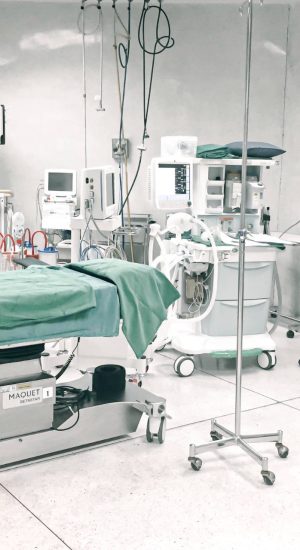Understanding TESE (Testicular Sperm Extraction)
Testicular Sperm Extraction (TESE) is a surgical procedure that involves the extraction of sperm directly from the testicles. TESE is typically performed as part of assisted reproductive techniques, such as In Vitro Fertilization (IVF) or Intracytoplasmic Sperm Injection (ICSI), to help couples with severe male infertility issues achieve pregnancy.
Why Choose ICSI at Creation Fertility Centre?
Choosing Testicular Sperm Extraction (TESE) at Creation Fertility Centre offers several compelling reasons for individuals and couples facing male infertility challenges. Here’s why you should consider TESE at our center:
- Expertise
- Personalized Care
- Comprehensive Evaluation
- State-of-the-Art Lab
- Commitment to Success


10 Years of Experience in The IVF Industry
The TESE Procedure
The TESE procedure is typically performed under local or general anesthesia, and it involves the following steps:
Incision
A small incision is made in the scrotum, allowing the surgeon access to the testicles.
Testicular Tissue Extraction
Small pieces of testicular tissue are extracted from one or both testicles using a specialized needle or biopsy device.
Sperm Retrieval
The extracted tissue is then carefully examined under a microscope in the laboratory to identify viable sperm
Sperm Isolation
If sperm are found within the testicular tissue, they are isolated and prepared for use in assisted reproductive procedures, such as ICSI, to fertilize eggs.
Frequently Asked Questions (FAQs)
Here are some frequently asked questions (FAQ) related to ICSI
TESE is a surgical procedure that involves the extraction of sperm directly from the testicles. It is typically performed to retrieve sperm for use in assisted reproductive techniques, such as In Vitro Fertilization (IVF) or Intracytoplasmic Sperm Injection (ICSI), in cases of male infertility.
TESE is recommended when a man has a condition known as azoospermia, which means there are no sperm in the ejaculate. It can be performed in cases of obstructive azoospermia (blockage preventing sperm release) or non-obstructive azoospermia (low sperm production in the testicles).
TESE is typically performed under local or general anesthesia. A small incision is made in the scrotum, and testicular tissue is extracted. The extracted tissue is then examined in the laboratory to identify viable sperm, which can be used in assisted reproductive procedures.
TESE is generally considered a safe procedure, but like any surgical intervention, it carries some risks, including infection, bleeding, and scarring. Your fertility specialist will discuss the potential risks and benefits with you.
The duration of the TESE procedure can vary, but it typically takes around 30 minutes to an hour.
Yes, sperm retrieved through TESE can be used in assisted reproductive techniques, such as ICSI, to fertilize eggs. This increases the chances of achieving a successful pregnancy.
Depending on the specific circumstances, other sperm retrieval methods such as Percutaneous Epididymal Sperm Aspiration (PESA) or Microsurgical Epididymal Sperm Aspiration (MESA) may be considered. Your fertility specialist will determine the most suitable approach.
The success of TESE, when used in conjunction with assisted reproductive techniques, can vary depending on individual factors. Success rates may also depend on the underlying causes of infertility.
Your fertility specialist will provide instructions for post-procedure care, which may include pain management, rest, and the use of prescribed medications if necessary.
Yes, TESE can be used for same-sex couples who require donor sperm or single individuals who need assisted reproductive technologies to achieve pregnancy.
